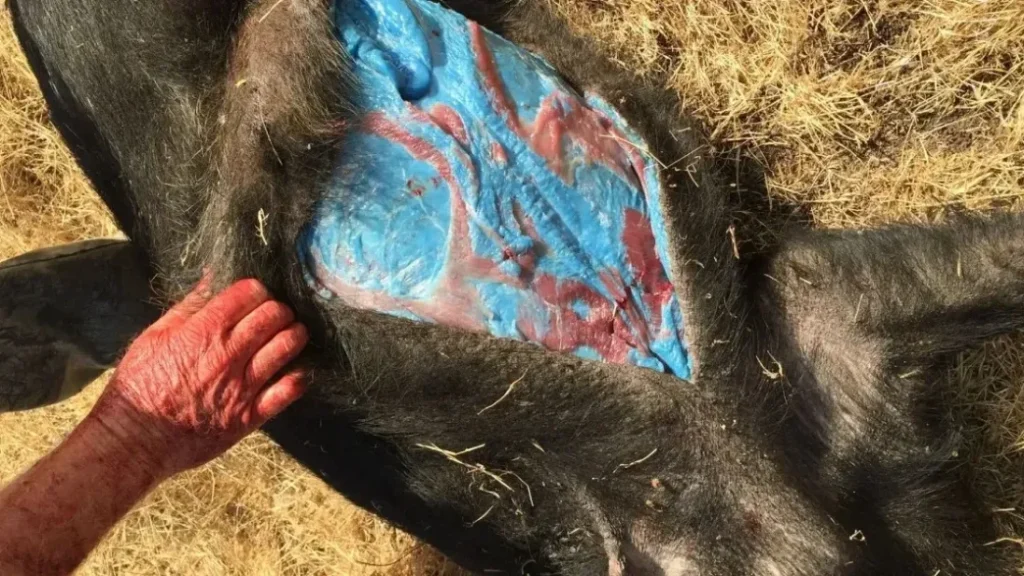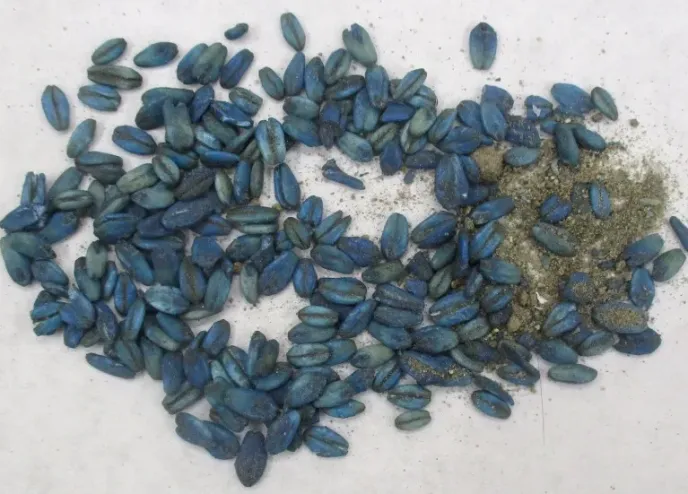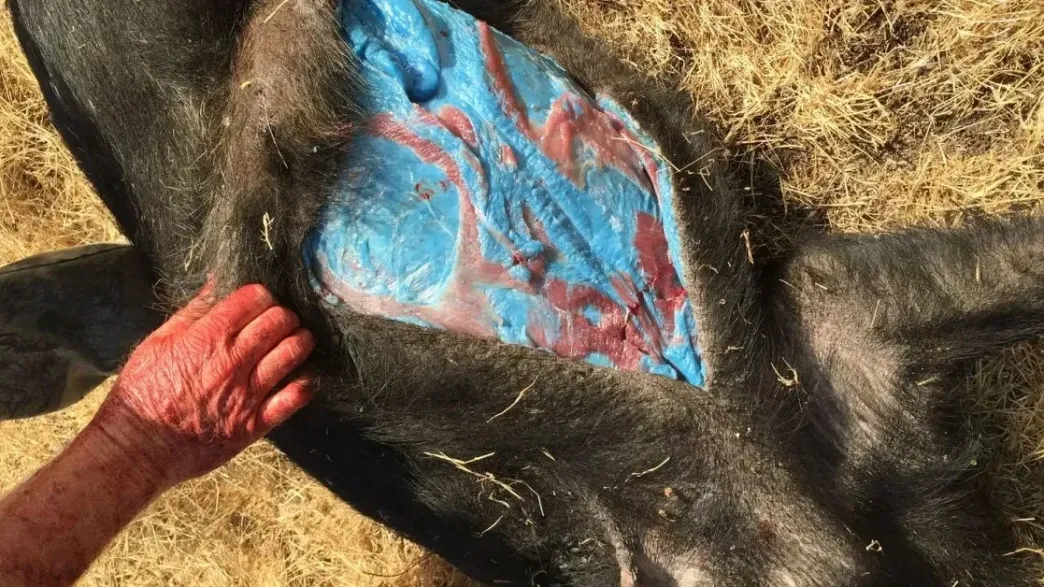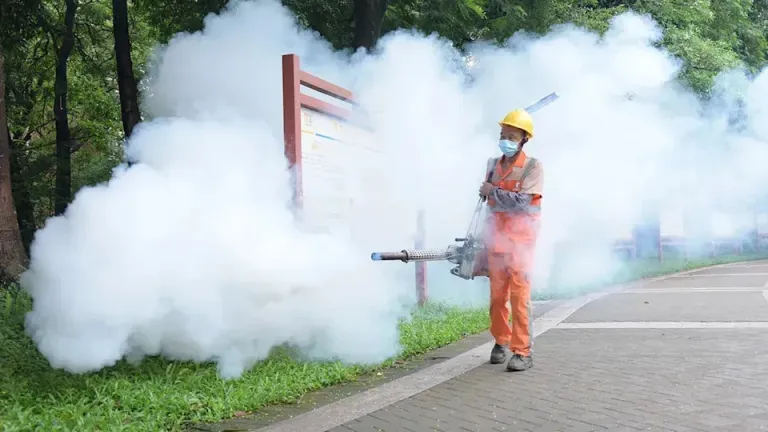California’s Wild Pigs Are Turning Electric Blue — And Experts Say It’s a Serious Warning

Imagine you’re a seasoned wildlife trapper. You’ve processed hundreds of feral hogs and know exactly what to expect. Then, one day, you cut into a wild pig and find meat glowing like a blue raspberry slushie.
That’s exactly what happened to Dan Burton of Urban Trapping Wildlife Control. Working in Monterey County earlier this year, Burton stumbled upon something so strange it sounded like science fiction: wild pigs with neon-blue flesh.
“I’m not talking about a hint of blue,” Burton told reporters. “I’m talking about neon, blueberry blue.”
As bizarre as it looks, this isn’t genetic mutation or Hollywood special effects. It’s a real-world side effect of rodent poisons seeping into the food chain — and it could have dangerous consequences for both wildlife and humans.
A Shocking Discovery in the Salinas Valley
In February and March, Burton was hired to manage feral hogs damaging farmland along the Salinas River. The job was routine until he noticed something unsettling: beneath the pigs’ skin, muscle and fat were bright blue.
Burton immediately suspected poison and alerted county officials and the California Department of Fish and Wildlife (CDFW). Lab results confirmed his fears — the pigs had ingested diphacinone, a widely used rodenticide.
Why the Meat Turned Blue
Diphacinone itself isn’t colored. It works by stopping blood from clotting, causing fatal internal bleeding in rodents. But commercial bait is dyed bright blue so humans can recognize it as toxic.
Wild pigs, of course, don’t know that. Opportunistic and powerful, they simply tore open bait stations meant for squirrels and feasted on the pellets inside. Burton even caught them on surveillance cameras actively seeking out the traps.

“These pigs weren’t stumbling on it by accident,” Burton explained. “They were looking for it, breaking the stations open, and eating the poison.”
Not the First Case
As shocking as this sounds, it isn’t new. Photos of similarly blue pigs surfaced on social media in 2015 after hunters in Morgan Hill made the same grisly discovery.
In fact, a 2018 CDFW study found that about 8% of wild pigs tested near agricultural and residential areas carried rodenticide residues in their tissues. That means nearly one in ten feral hogs could be contaminated.
Why the Poison Doesn’t Kill Them Quickly
Unlike smaller rodents, a 200-pound hog can eat diphacinone repeatedly without dropping dead right away. The poison works slowly, allowing the pigs to keep roaming, foraging, and behaving normally while toxic compounds accumulate in their bodies.
This delayed effect makes the contamination especially dangerous: the animals look healthy but carry poison that could harm predators — or people — that consume them.
A Hidden Risk for Hunters and Families
CDFW officials are urging hunters to take this seriously. Eating meat from exposed animals, even when thoroughly cooked, can still cause poisoning. Symptoms in humans include fatigue and internal complications, and long-term pesticide exposure has been linked to conditions such as diabetes, fertility decline, and certain cancers.
For Burton, the discovery was devastating. He usually donates trapped pigs to food banks, but contaminated carcasses can’t be used, cutting off a valuable resource for low-income families.
California Cracks Down
The state tightened restrictions on anticoagulant rodenticides in 2024, banning diphacinone in most cases except for licensed pest control and specific agricultural use. The goal is to reduce “collateral damage” to non-target species like pigs, hawks, owls, and mountain lions.
Wildlife advocates are pushing for broader adoption of integrated pest management — solutions like predator support, fencing, trapping, and habitat adjustments that control rodents without poisoning ecosystems.
A Bigger Environmental Problem
The glowing blue pigs are just one symptom of a much larger issue. Rodenticides don’t stay contained; they ripple through ecosystems.
Wild pigs are especially vulnerable since they’ll eat both poisoned rodents and the bait itself. But they’re not alone. Raptors, coyotes, and even domestic pets can be poisoned secondhand when they consume contaminated prey.
This process, called secondary poisoning, creates a chain reaction that threatens entire food webs.
A Warning We Can’t Ignore
The eerie blue meat may be shocking, but it’s also a wake-up call. What began as a solution to crop-damaging squirrels has spiraled into a hazard affecting wildlife, hunters, and communities alike.
Officials now encourage anyone encountering blue coloration in game animals to contact CDFW immediately. And hunters are being told: when in doubt, don’t eat it.
The ranch where Burton first made his discovery has already removed bait stations to prevent more incidents — proof that once the problem is recognized, it can be fixed quickly.
The Bottom Line
California’s neon-blue pigs are more than a viral oddity. They’re a fluorescent warning about how human pest control choices ripple outward in unexpected ways.
For years, cases may have gone unnoticed, with contaminated meat possibly entering kitchens without anyone realizing. Burton’s discovery has finally brought the issue into the spotlight.
The message is clear: poisons meant for pests don’t stop with pests. And if we don’t rethink how we manage agriculture and wildlife, we may keep seeing the consequences — sometimes glowing right in front of us.







